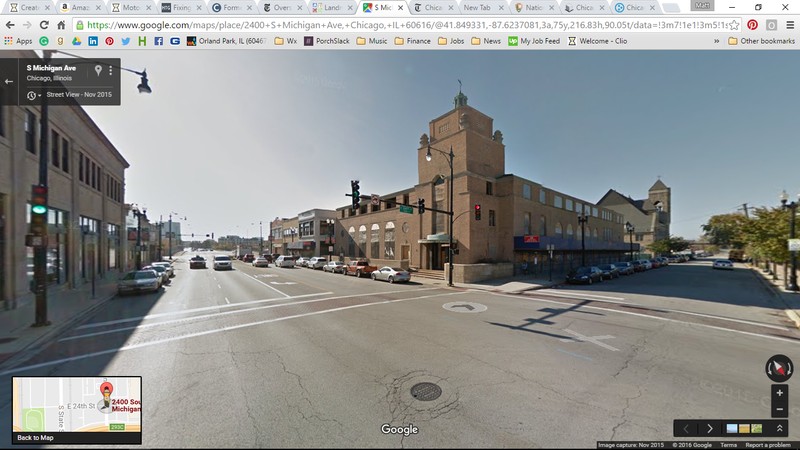Chicago Defender Building - Chicago Motor Row District
Introduction
Text-to-speech Audio
Images
Photo of the building, once home to the Chicago Defender and Illinois Auto Club. Photo Credit: Google Maps.

Backstory and Context
Text-to-speech Audio
For nearly five decades, the Chicago Defender served as one of the strongest voices for African Americans, much of that time when Jim Crow laws, racially restricted covenant real-estate practices, and military segregation were prevalent in the U.S. It's 1950s -2005 Michigan Ave. home sits on the northern side of the Bronzeville neighborhood and the southern end of the historic Motor Row district, much of which is listed on the National Register for Historic Places.
Located on the South Side, this building was designed in 1936 by Prairie School architect Philip Maher as the headquarters for the Illinois Automobile Club. Maher designed the building using a Spanish Mission style motif. However, in the middle of the 20th century, the building was resigned, allowing for use of Art Deco details, which can still be seen today.1
About the Chicago Defender
However, as noted in the New York Times in January of 2016:
As the former Chicago Defender editor and reporter Ethan Michaeli shows in his extraordinary history, “The Defender,” the Negro press barons attacked military segregation with a zeal that set Roosevelt’s teeth on edge. The Negro press warned Black men against Navy recruiters who would promise them training as radiomen, technicians or mechanics — then put them to work serving food to white men. It made its readers understand that Black men and women in uniform were treated worse in Southern towns than German prisoners of war and sometimes went hungry on troop trains because segregationists declined to feed them. It focused unflinchingly on the fistfights and gun battles that erupted between Blacks and whites on military bases. And it reiterated the truth that no doubt cut Roosevelt the most deeply: His government’s insistence on racial separation was of a piece with the “master race” theory put in play by Hitler in Europe.4
Robert S. Abbott, who came north as part of the Great Migration -- the movement of Blacks from the South to the North during the 20th century, helped create The Defender. Abbott's set out on a mission to destroy racial prejudice. The paper fought against racial, economic, and social discrimination, and wrote gut-wrenching stories about lynchings, rape, and mob violence. In addition to its hard-hitting stories, the Chicago Defender also contributed greatly to serving its African Americans as a cultural voice. The high level of journalism allowed for writing that included columnns and editorials, society news, culture, and local politics. 5
When Sengstacke traveled to Washington to meet with Attorney General Francis, he was threatened with being shutdown. However, Sengstacke noted that the papers had done nothing illegal because they had urged African Americans to support the war. Moreover, he dared the Attorney General to shutdown the papers. The tone and strength forced a reverse of positions. Fearing riots, the Black papers suddenly found opportunities to interview federal officials, including meeting with FDR -- finally -- in 1944, the year before FDR died. In 1949, President Truman ended military segregation, and helped change national views on government-based racism -- although it certainly took some time.7
The paper continued to thrive throughout the Civil Rights protests of the 1960s and into the 1970s, but as the 20th century waned, so did the power of the Chicago Defender and African-American papers, in general.
